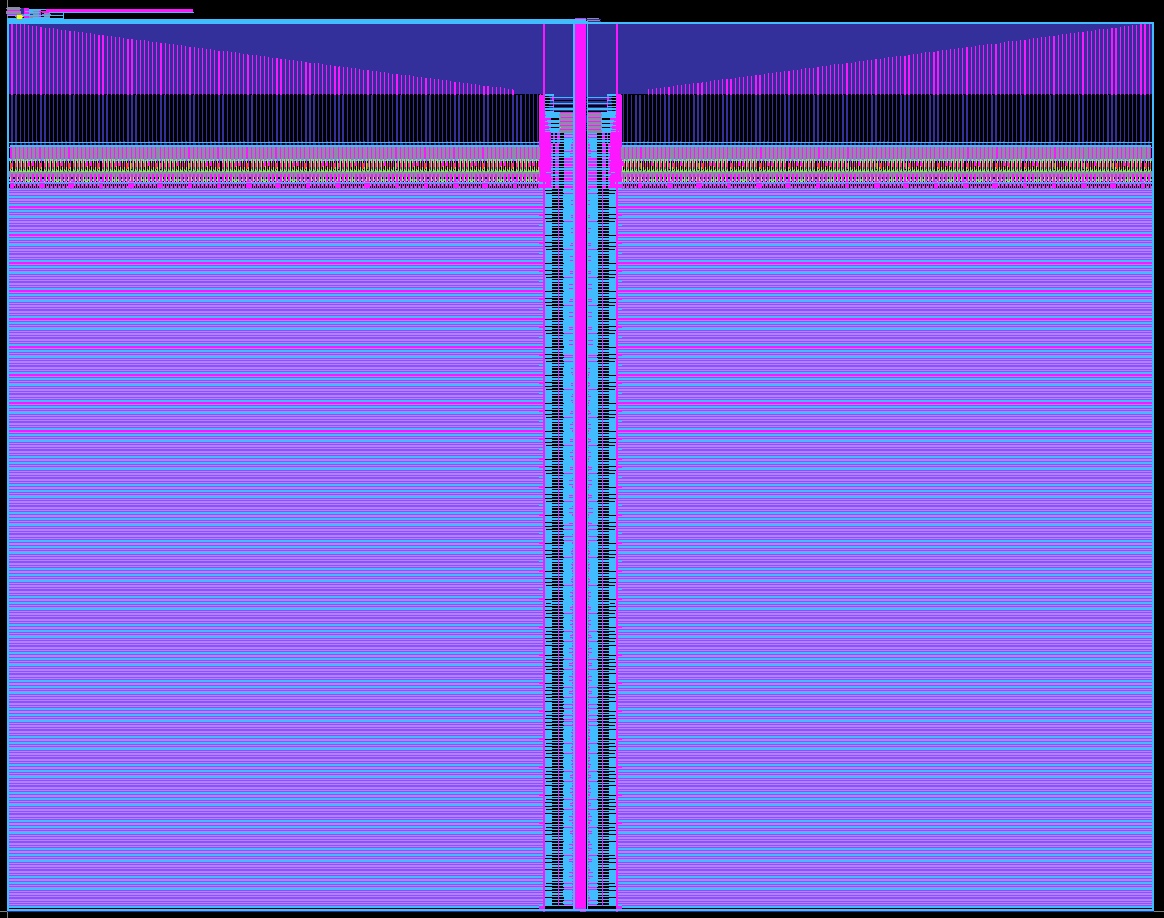An open-source static random access memory (SRAM) compiler.
OpenRAM is an award winning open-source Python framework to create the layout, netlists, timing and power models, placement and routing models, and other views necessary to use SRAMs in ASIC design. OpenRAM supports integration in both commercial and open-source flows with both predictive and fabricable technologies.
Please take a look at our presentation We have created a detailed presentation that serves as our documentation. This is the most up-to-date information, so please let us know if you see things that need to be fixed.
The OpenRAM compiler has very few dependencies:
- Ngspice 26 (or later) or HSpice I-2013.12-1 (or later) or CustomSim 2017 (or later)
- Python 3.5 or higher
- Python numpy (pip3 install numpy to install)
- Python scipy (pip3 install scipy to install)
If you want to perform DRC and LVS, you will need either:
You must set two environment variables:
- OPENRAM_HOME should point to the compiler source directory.
- OPENERAM_TECH should point to a root technology directory.
For example add this to your .bashrc:
export OPENRAM_HOME="$HOME/openram/compiler"
export OPENRAM_TECH="$HOME/openram/technology"
You may also wish to add OPENRAM_HOME to your PYTHONPATH:
export PYTHONPATH="$PYTHONPATH:$OPENRAM_HOME"
We include the tech files necessary for SCMOS SCN4M_SUBM. The SCMOS spice models, however, are generic and should be replaced with foundry models. If you are using FreePDK45, you should also have that set up and have the environment variable point to the PDK. For example add this to your .bashrc:
export FREEPDK45="/bsoe/software/design-kits/FreePDK45"
You may get the entire FreePDK45 PDK here. If you are using SCMOS, you should install Magic and Netgen. We have included the most recent SCN4M_SUBM design rules from Qflow.
Once you have defined the environment, you can run OpenRAM from the command line using a single configuration file written in Python.
For example, create a file called myconfig.py specifying the following parameters for your memory:
# Data word size
word_size = 2
# Number of words in the memory
num_words = 16
# Technology to use in $OPENRAM_TECH
tech_name = "scn4m_subm"
# You can use the technology nominal corner only
nominal_corner_only = True
# Or you can specify particular corners
# Process corners to characterize
# process_corners = ["SS", "TT", "FF"]
# Voltage corners to characterize
# supply_voltages = [ 3.0, 3.3, 3.5 ]
# Temperature corners to characterize
# temperatures = [ 0, 25 100]
# Output directory for the results
output_path = "temp"
# Output file base name
output_name = "sram_{0}_{1}_{2}".format(word_size,num_words,tech_name)
# Disable analytical models for full characterization (WARNING: slow!)
# analytical_delay = False
You can then run OpenRAM by executing:
python3 $OPENRAM_HOME/openram.py myconfig
You can see all of the options for the configuration file in $OPENRAM_HOME/options.py
Regression testing performs a number of tests for all modules in OpenRAM. From the unit test directory ($OPENRAM_HOME/tests), use the following command to run all regression tests:
python3 regress.py
To run a specific test:
python3 {unit test}.py
The unit tests take the same arguments as openram.py itself.
To increase the verbosity of the test, add one (or more) -v options:
python3 tests/00_code_format_check_test.py -v -t freepdk45
To specify a particular technology use "-t " such as "-t freepdk45". The default for a unit test is scn4m_subm. The default for openram.py is specified in the configuration file.
If you want to support a enw technology, you will need to create:
- a setup script for each technology you want to use
- a technology directory for each technology with the base cells
We provide two technology examples for SCMOS and FreePDK45. Each specific technology (e.g., FreePDK45) should be a subdirectory (e.g., $OPENRAM_TECH/freepdk45) and include certain folders and files:
- gds_lib folder with all the .gds (premade) library cells:
- dff.gds
- sense_amp.gds
- write_driver.gds
- cell_6t.gds
- replica_cell_6t.gds
- dummy_cell_6t.gds
- sp_lib folder with all the .sp (premade) library netlists for the above cells.
- layers.map
- A valid tech Python module (tech directory with __init__.py and tech.py) with:
- References in tech.py to spice models
- DRC/LVS rules needed for dynamic cells and routing
- Layer information
- Spice and supply information
- etc.
- Report bugs by submitting Github issues.
- Develop new features (see how to contribute)
- Submit code/fixes using a Github pull request
- Follow our project.
- Read and cite our ICCAD paper
- Additional hints
- Documentation
- OpenRAM Slack Workspace
- OpenRAM Users Group (subscribe here)
- OpenRAM Developers Group (subscribe here)
OpenRAM is licensed under the BSD 3-clause License.
- Matthew Guthaus from VLSIDA created the OpenRAM project and is the lead architect.
- James Stine from VLSIARCH co-founded the project.
- Many students: Hunter Nichols, Michael Grimes, Jennifer Sowash, Yusu Wang, Joey Kunzler, Jesse Cirimelli-Low, Samira Ataei, Bin Wu, Brian Chen, Jeff Butera
If I forgot to add you, please let me know!




